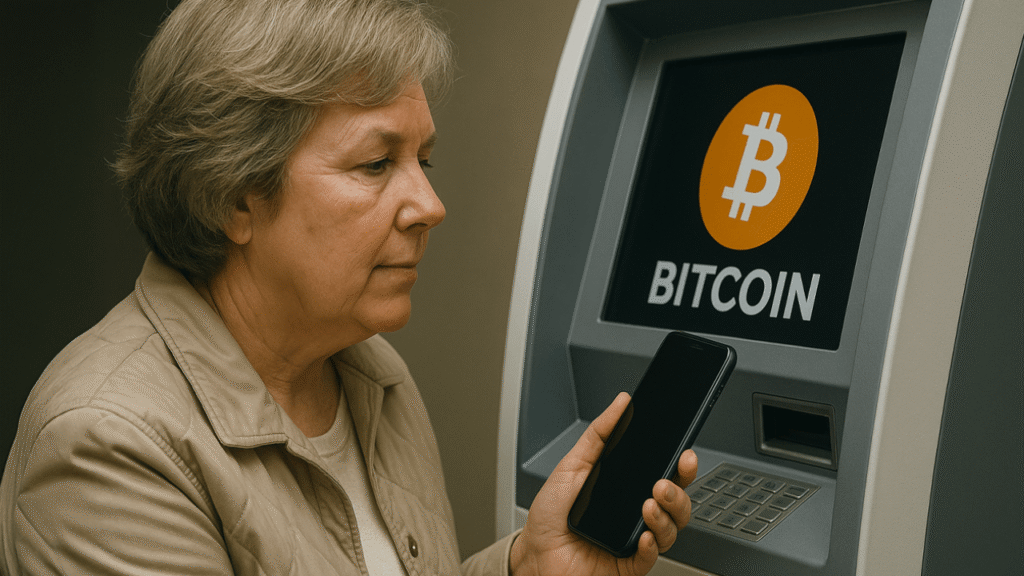Bitcoin ATM fraud has become an alarming trend in the cryptocurrency world. As Bitcoin adoption grows, scammers are finding innovative ways to trick users into losing their funds. Understanding these scams and learning how to recover funds is crucial for anyone using Bitcoin ATMs. In this article, we will explore common Bitcoin ATM fraud schemes, real-life examples, preventive strategies, and recovery tips.

What Is Bitcoin ATM Fraud?
Bitcoin ATM fraud occurs when criminals manipulate Bitcoin ATM users to steal their cryptocurrency. These scams can involve phishing, impersonation, technical manipulation, or social engineering. Unlike traditional bank fraud, Bitcoin transactions are irreversible, making these scams highly profitable for criminals.
How Criminals Scam Victims
Social Engineering Scams
Many Bitcoin ATM fraud cases involve social engineering. Scammers impersonate tech support or financial institutions to convince victims to deposit Bitcoin. They may claim your account is at risk and instruct you to transfer funds to a “safe” wallet, which is actually controlled by the criminal.
Fake QR Codes
Fraudsters sometimes place fake QR codes over legitimate Bitcoin ATM codes. When victims scan the code, their funds are sent to the scammer’s wallet instead of their intended destination.
Phishing Attacks
Phishing is common in Bitcoin ATM fraud. Scammers may send fake emails or messages claiming to be from the ATM operator. These messages ask victims to provide their private keys or PINs, giving criminals full access to their cryptocurrency.
Technical Exploits
Some sophisticated criminals exploit vulnerabilities in the ATM software. This can allow them to manipulate transaction amounts or redirect Bitcoin to their wallets. While less common, these attacks highlight the importance of using secure, reputable Bitcoin ATMs.
Real-Life Case Study: Bitcoin ATM Scam in New York
In 2023, a series of Bitcoin ATM scams in New York targeted elderly users. Victims received phone calls claiming they owed taxes or had legal trouble. The scammers instructed them to purchase Bitcoin at local ATMs and send it to a specific wallet. Within weeks, authorities traced over $500,000 in stolen Bitcoin across multiple wallets. Fortunately, some victims recovered a portion of their funds after law enforcement coordinated with blockchain analysts.
This case demonstrates the importance of vigilance and knowledge. Criminals often exploit fear and urgency, making education a key defense against Bitcoin ATM fraud.
How Victims Can Recover Funds
Contact the ATM Operator
Victims should immediately notify the ATM operator. While Bitcoin transactions are irreversible, operators may assist in identifying the transaction or provide guidance on contacting authorities.
Report to Law Enforcement
Local and federal law enforcement agencies, such as the FBI in the United States, can investigate Bitcoin ATM fraud. Providing transaction IDs and wallet addresses helps authorities track stolen funds.
Blockchain Analysis
Blockchain analytics firms can trace stolen Bitcoin. Some firms help victims recover funds by identifying exchanges or wallets linked to criminals. Though recovery is not guaranteed, professional assistance increases the chances of retrieving stolen funds.
Educate and Prevent
Preventing Bitcoin ATM fraud starts with education. Users should verify QR codes, ignore unsolicited calls, and never share private keys. Awareness of common scams reduces the likelihood of becoming a victim.
Tips to Avoid Bitcoin ATM Fraud
Verify the ATM
Only use ATMs from reputable operators. Check the company’s website or customer reviews to ensure legitimacy.
Double-Check QR Codes
Always scan QR codes displayed on the ATM screen rather than those provided by strangers.
Avoid Urgent Transactions
Scammers often create a sense of urgency. Take time to verify requests before transferring Bitcoin.
Use Two-Factor Authentication
Enable two-factor authentication for wallets and accounts associated with Bitcoin ATMs. This adds an extra layer of security.
Keep Records
Document every transaction. Save receipts, wallet addresses, and transaction IDs for future reference or law enforcement reporting.
Strategies Scammers Use
Understanding criminal strategies helps in prevention:
- Impersonation: Pretending to be banks, law enforcement, or tech support.
- Fake websites and apps: Luring victims to malicious platforms.
- Emotional manipulation: Exploiting fear, urgency, or greed.
- Technical exploits: Manipulating ATM software to redirect funds.
Recognizing these tactics empowers users to stay vigilant and protect their Bitcoin assets.
FAQs About Bitcoin ATM Fraud
Q1: How common is Bitcoin ATM fraud?
Bitcoin ATM fraud is increasing as cryptocurrency adoption grows. While exact numbers vary, reports of scams have risen significantly over the past few years.
Q2: Can stolen Bitcoin be recovered?
Recovery is possible but not guaranteed. Success depends on reporting quickly, blockchain tracing, and cooperation with law enforcement or recovery specialists.
Q3: How can I tell if a Bitcoin ATM is safe?
Check for official operator information, verify QR codes on-screen, and read user reviews. Avoid ATMs in remote or unmonitored locations.
Q4: What should I do if I’ve been scammed?
Immediately contact the ATM operator, report the fraud to authorities, and document all transaction details. Professional blockchain analysis may help in tracing the funds.
Q5: How can I prevent Bitcoin ATM fraud?
Always verify the ATM, never share private keys, use two-factor authentication, and be cautious of unsolicited requests or urgent instructions.

Conclusion
Bitcoin ATM fraud is a growing threat in the cryptocurrency world. Criminals use social engineering, fake QR codes, phishing, and technical exploits to steal funds. Victims can increase their chances of recovery by reporting incidents, using blockchain analysis, and staying informed. Preventive strategies, such as verifying ATMs, double-checking QR codes, and avoiding urgent requests, are essential to protect your assets. Awareness and vigilance remain the most effective tools against Bitcoin ATM scams.





